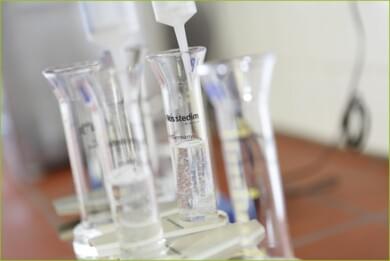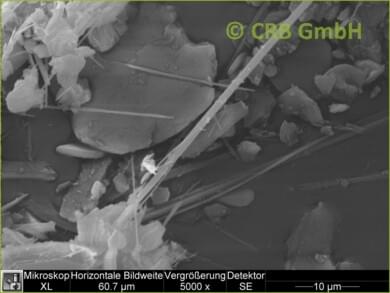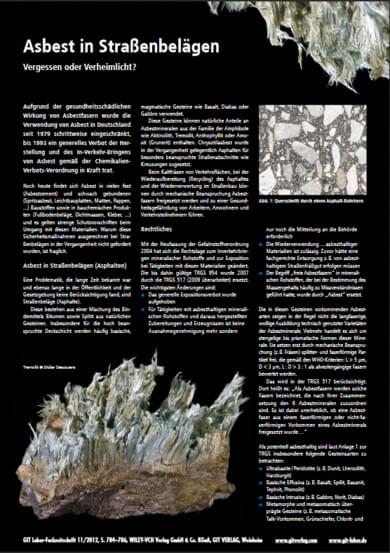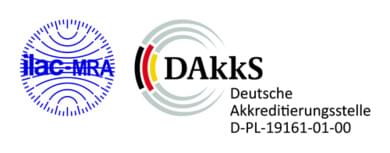Quantitative analysis for asbestos in road pavings, asphaltic material and mineral powders and dusts in accordance with IFA / BIA procedure 7487
Our services for you
-
The quantitative determination of mass content of asbestos in road pavings, asphaltic material and mineral powders and dusts according to TRGS 517, IFA / BIA procedure 7487
-
Preliminary examination, qualitative, as a powderised sample in accordance with guideline VDI 3866, page 5. According to “Data sheet on the disposal of asbestos-containing waste” of NGS Ltd.
-
Determination of Polycyclic aromatic hydrocarbon, PAHs according to EPA in collaboration with partner laboratories.

General information on asbestos in road pavings, asphalt
Road pavings, in this case asphalt, consist of a mixture of the binder bitumen and gravel from natural stones. In particular basic magmatic stones like basalt, diabase or gabbro are often used for the highly stressed surface course.
These often have a natural content of asbestos minerals from the amphibole family like actinolite, tremolite, anthophyllite, amosite (grunerite).
Asbestos fibres may be released by mechanical stress during pavment cutting, especially cold planing of paved traffic areas and recycling or re-used in road construction. They are a potential health hazard for workers, residents and road users.
Technical rule TRGS 517 describes safety measures concerning the working process with naturally asbestos-containing mineral raw materials and any product or mixture derived from them. It prescribes that IFA / BIA procedure 7487, BGIA 7487 - measures regarding the analytical determination of low mass contents of asbestos fibres in powders and dusts by SEM/EDX, figure 7487 – is to be used for the determination of the asbestos mass content.
Alternatively, according to NGS “Data sheet on the disposal of asbestos-containing waste” testing for asbestos in bitumen or tar –containing road construction waste - can be made according VDI guideline 3866, page 5.
Provided that no further fibres can be detected no further testing is necessary. If fibres can be detected according to this procedure quantification according to IFA / BIA procedure 7487 is compulsive.
- Asbestos minerals: actinolite-tremolite, amosite (grunerite)-anthophyllite, seldom chrysotile in bitumen
- Binder (matrix): bitumen
- Further components: partly fibrous minerals: olivine, pyroxene, non-asbestos amphibole (hornblende), feldspar, mica, quartz, calcite, epidote
- Similar, asbestos-free products: asbestos-free asphalts, e.g. with limestone as aggregate

Amphibole asbestos, anthophyllite, in asphalt – SEM image



